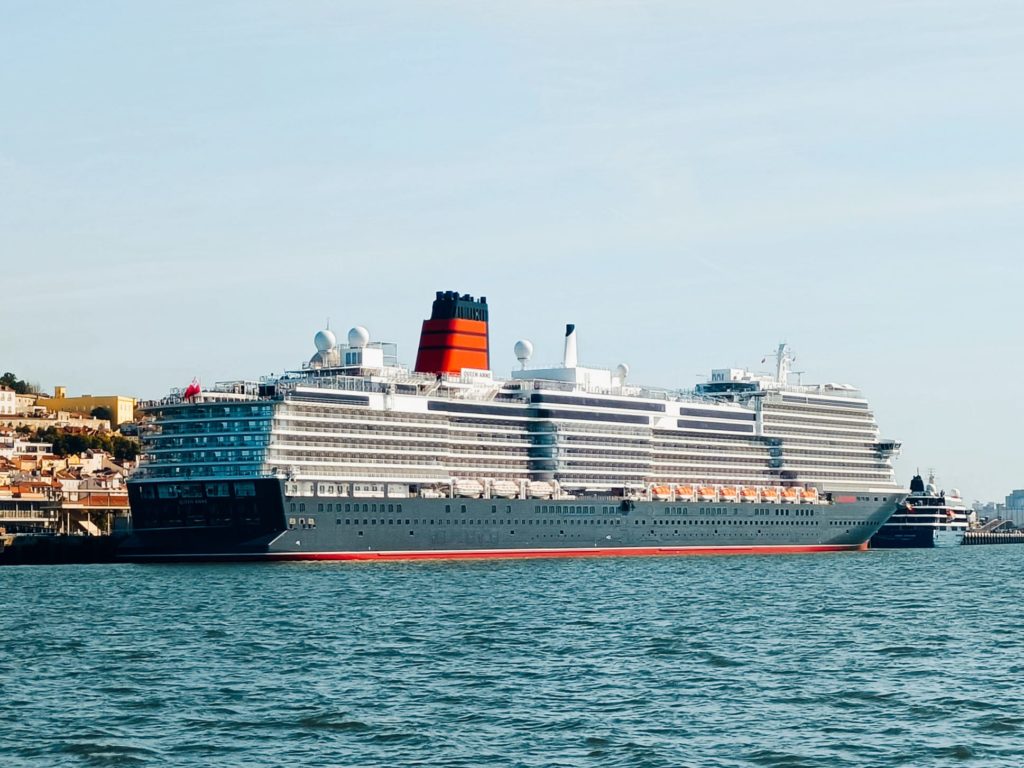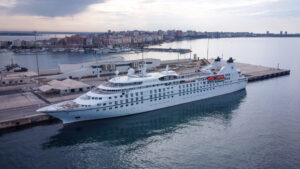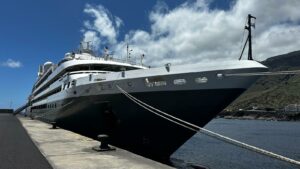The Port of Lisbon welcomed the new cruise ship Queen Anne, currently on its inaugural voyage. The Portuguese capital was the third city on the itinerary, following Southampton and La Coruña.
To mark the choice of Lisbon for the inaugural voyage of the Queen Anne, the Port of Lisbon presented Captain Inger Thorhauge, the first woman to command a Cunard Line ship, with the customary commemorative plaque for the occasion.
Carlos Correia, President of the Port of Lisbon Administration, considers it “an honor and a great prestige that the Port of Lisbon has been chosen once again as one of the destinations for the inaugural voyages of Cunard Line ships. Cunard Line ships have already attracted many onlookers to the banks of the Tagus River, both for their first calls and for their international events, such as on May 6, 2014, when the Port of Lisbon welcomed for the first time simultaneously the ‘3 Queens’ of this operator – Queen Mary 2, Queen Elizabeth 2, and Queen Victoria. It was only the fourth time in history that the three ‘Queen’ ships have come together, with the Port of Lisbon being the third location for this event, alongside Southampton and New York. Therefore, we are very enthusiastic about the visit of the Queen Anne.”
The new Queen Anne is the first ship to enter service for Cunard Line in over 10 years and is the company’s second-largest vessel. It has a crew capacity of 1,225, can accommodate 2,996 passengers in double occupancy and 3,353 in maximum occupancy within its 1,397 cabins distributed across 8 of the ship’s 13 decks. The ship measures 323 meters in length and has a gross tonnage of 113,000.
The Queen Anne focuses on reducing its carbon footprint through various innovative methods that include alternative fuels and cutting-edge technology, closed-loop circular economies, and the reduction and elimination of non-essential single-use plastics.





